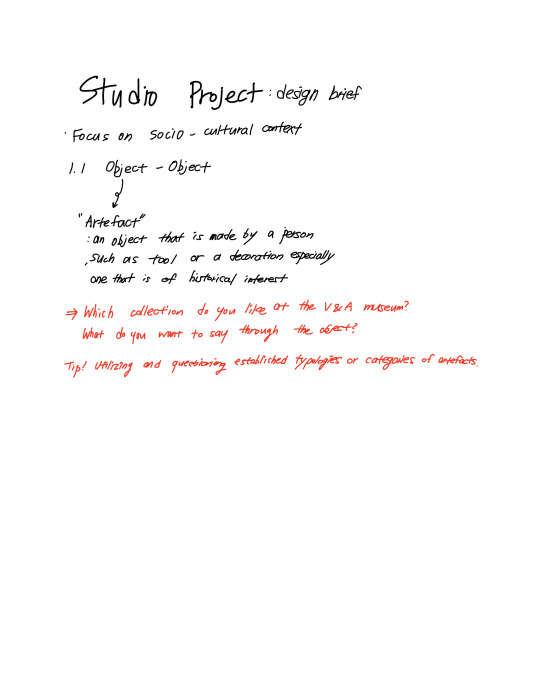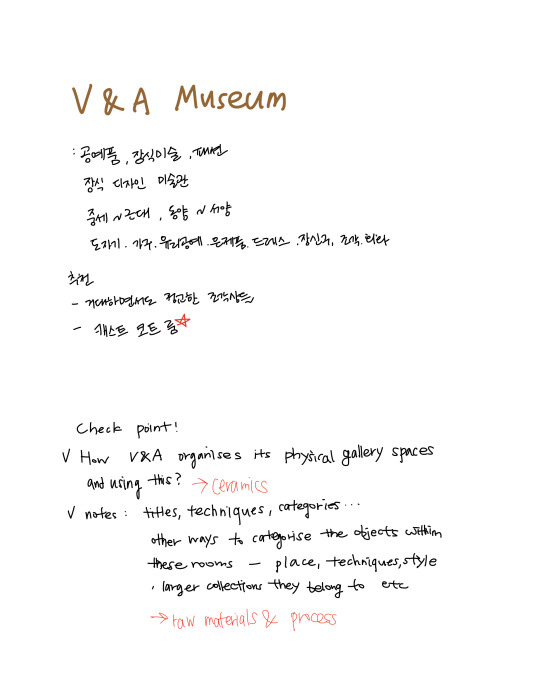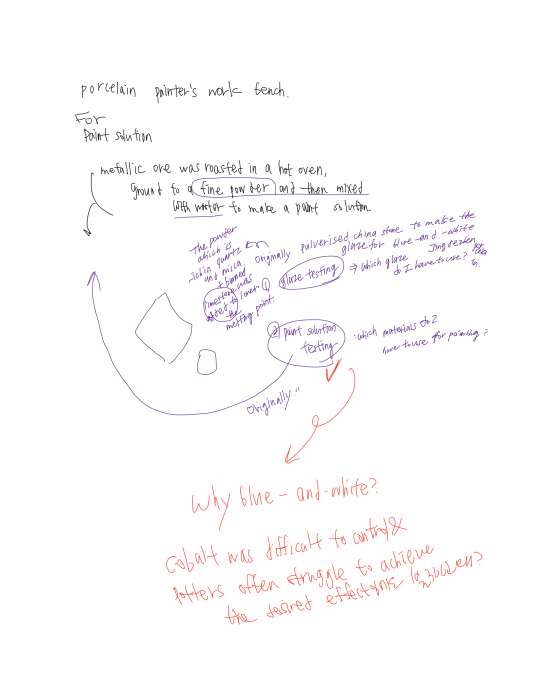Don't wanna be here? Send us removal request.
Text
Inspired by Nature
One of the shiniest collections in the V&A Museum is the ‘Glass’ collection. There’s no trick. Clear, transparent, glossy, lucent and crystal are the perfectly matching adjectives with ‘Glass’.

A ‘lamp worked’ glass, made in Thuringia, is the one among a tremendous amount of glass artifacts displayed in a clear glass cabinet. It is in the cabinet named ‘Inspired by nature’ showing various vases and glasses designed in ca 1900. According to the online gallery label of V&A Museum, this type of ‘lamp work’ is characteristic of glass production from Thuringia in eastern Germany. Canes of glass are melted and worked over a single flame. Glassworks in the area specialize in fancifully decorative items but it is also a center for the production of glass tubes and phials used in laboratories. The three-dimensional plant of the fissured depths of mossy agate shows strong symbolism became fashionable in literature and the fine arts. The decorative arts reflected this trend.
In 19th century, there was a great interest in Japanese art and it played an important role in occident. Japan signed a forced trade treaty with America in 1853 when Commander Perry fired the port of Japan. A great deal of information and goods that reached Europe and the United States led to a craze for all things Japanese, which developed into a major cultural phenomenon known as ‘Japonism’. In adopting the understand sophistication of Japanese shapes and patterns, designers established a style and it became ‘Japonism’. In Samuel Bing’s ‘Le Japon artistique’ journal he wrote, ‘Especially to the numerous people who, for whatever reason, are interested in the future of the decorative arts.’

Next to the object I choose, other shapes of vases are displayed from top shelf to bottom shelf. They are all in the same context related to flowers and nature.

Not only curating but museum description is the key of touring a museum gallery. Knowing the social, cultural, economic, political and technological context of each object is important for anyone who visits the museum. Particularly, it is essential for audiences who try to fully understand designers’ work. For that reason, they have to convey the exact and detailed intention and meaning of their work to the institutions. Content defines the quality of textual and visual information.
The V&A Museum as a discipline is saying about the 19th-century glass story distinguishing flower, plant and nature as a symbol of glass design. Also, they introduce the individual glass artist-makers who attracted the adulation of the art world with nature-inspired works. Especially through this object, it suggests the new means of viewing the natural world to audiences as the new ways of seeing.
Bibliography
1. V&A website, https://collections.vam.ac.uk/item/O4889/vase-unknown/
2. Lee Jung ah, 2001, The Japanese Influence in Art Nouveau Decorative Arts, University of Glasgow (United Kingdom), ProQuest Dissertations
3. Publishing Pallud, J. and Straub, D.W., 2014, Effective website design for experience-influenced environments: The case of high culture museums. Information & Management, 51, 359-373
1 note
·
View note
Text

Blogging + Video = Vlogging
'A ‘V-log’ is a video based blog format that has become the latest trend on social media. To record my life from A-Z in a similar fashion, I’ve started to film my daily life in London and edit the ‘vlog’ to journalize my experience living abroad for the first time. As time goes by, it has taken up quite a big part of my recent days. I had not before filmed my daily life, and this voluntary change that I had undergone would change my life in different ways.
After the vlog is uploaded on the social media platform YouTube, anyone can watch my daily life and routines in chronological order. This includes my personal reflections, commentary on current events and daily life routine. Anonymous viewers can get to know almost everything about me - who I am, where I go, when I eat lunch and what I do in a day and so on - unless I manipulate my daily life for my vlogs. I realised that the system of filming vlogs is comparable to the design of a ‘panopticon’. The camera filming me acts as the central tower watching me, whilst the viewers behind the screen are unseen.
The ‘panopticon’, designed by Jeremy Bentham(Beauchamp and Bozovic, 1995) and later used by Foucault (1991), allows a watchman to observe occupants without the occupants knowing whether or not they are being watched. The guards could thus observe every inmate at any time, unseen by the prisoners. In this respect, the camera filming me is the watchman in Bentham’s panopticon tower and I am the subject from which information is being extracted from. The relationship between being seen is thus broken by one party being unseen, and I am self-participating in a process of design as surveillance.
As Basturk (2017) suggests, the Panopticon is ‘a process in which the body is handled as an examined object’, in which the goal is standardising behaviour (p3). For me the ‘panopticon’ is not the disciplinary system, but I am slightly inclined to adjust my behaviour in certain ways to change others’ perceptions of me. For example, I might try to eat regularly and not spend money unnecessarily, for fear and awareness that my parents will watch my videos. Even though my camera is set by my intention for my vlogs, I tend to be more careful or go out of my way to do something more for the camera than the other normal days which I am not ‘filming’. My own self-concern rises due to being observed with the lens staring at me every time like a prisoner in a ‘panopticon’ It feels sometimes as though I am on a global stage, where anyone at anytime can watch me and judge my actions, and thus I feel obliged to act accordingly, speak accordingly, perform accordingly.
‘Vlogging’ can be seen as the growing trend of participatory surveillance. Suggested by Poster (1990), individuals are now actors in their own surveillance.
Is the me in my vlogs truly me? Or is it a version of me that has been created to appeal to an audience?
Bibliography
1. Thomas McMullan. What does the panopticon mean in the age of digital surveillance>, The Guardian, 23 July 2015 : https://www.theguardian.com/technology/2015/jul/23/panopticon-digital-surveillance-jeremy-bentham
2. Andreea Cutieru, The Architecture of Surveillance: The Panopticon Prison, Arch Daily, 18 April 2020,https://www.archdaily.com/937611/the-architecture-of-surveillance-the-panopticon-prison
3. The ethics center, Ethics Explainer: The Panopticon, 18 July 2017, https://ethics.org.au/ethics-explainer-panopticon-what-is-the-panopticon-effect/
4. Basturk, E. (2017). A brief analyse on Post Panoptic Surveillance: Deleuze and Guattarian Approach. International Journal of Social Sciences, 6(2), pp 1-17.
5. Poster, M. (1990). The Mode of Information: Poststructuralism and social context. Cambridge: Polity Press.
0 notes
Photo





[The hardest process : design thinking, how to get ideas]
1. Struggled to understand the +1 project : how can I link the contextual and historical stories with my object?
2. Which objects do I have to make? Should I make the same object as the collection?
3. Which materials do I have to use to express my ideas exactly?
Therefore, I spent the most time in this process..
0 notes
Text


Change the collection : ‘Inro’, a pocket of Japanese traditional clothes ‘Kimono’ by a lacquer artist Shibata Zeshin
1 note
·
View note
Link
0 notes
Text
About raw materials of ceramic
1. China stone = Porcelain stone
: the part of formation of Kyushu
2. Kaolin : China clay
0 notes
Text
Why Ceramics? Why Mycelium?
A mushroom cap(a head of mushroom) with many textures
- Mold is a collection of numerous fungi like a human network regarded as a social structure composed of individuals
- The network of these tubular branching hyphae, called a mycelium, is considered a single organism, but they are connected. The filamentous network is visible, but the one cell is invisible to the naked eye.
- The uniqueness of the individual : Even if some mushrooms are same kind of mushrooms, they look all different. Humans also have different appearance, personalities, preferences, traits(=textures) and so on..
- Inspired by the mushrooms, I’m going to use the opaque qualities of ceramics. Made with the purest opaque white ceramic, this piece conveys the essence of human.
- Unlike glass, the ceramic is opaque that doesn’t show inside.
독립된 하나의 개인이지만 서로 유기적으로 연결된 혼자 살 수 없는 세상과 버섯을 동일시하다.
곰팡이는 세포가 독립하여 생활하지만 보통은 세포끼리 대나무처럼 직선으로 마디마디 연결되어 실같이 자란다. 그래서 곰팡이를 사상균(絲狀菌)이라고도 부른다. 마디 하나를 각기 독립된 세포로 본다. 곰팡이가 핀 것은 수많은 균체의 집합체이다. : 인간과 유사하다
0 notes


































